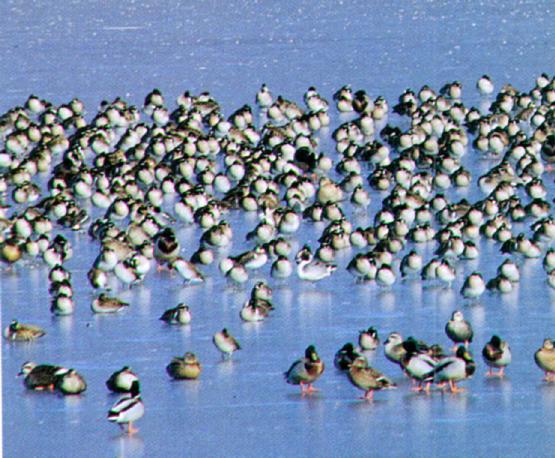|
| Query: bird | Result: 9300th of 32675 | |
Korean Bird: Baika Teal J01-flock on ice flat
| Subject: | Korean Bird: Baika Teal J01-flock on ice flat
| | Poster: | Kim Jinsuk (jskim@bulls.kordic.re.kr)
| |

| File size : 59449 bytes
File date : 1998:06:25 09:00:00
Resolution: 555x458
Jpeg process : Baseline
Posted Newsgroups: alt.binaries.pictures.animals,han.binaries.photo
Posted Date: Thu, 25 Jun 1998 11:28:45 +0900 |
Korean Bird: Baika Teal J01-flock on ice flat
Common name : Baikal Teal
Korean name : ga-chang-oh-ri (가창오리)
Latin name : Anas formosa
Photo by Young-Hae Kim
Scanned from a Korea's monthly science magazine,
"Science Dong-A", Mar. 1996.
Enjoy it.
[Description for Korean]
사진 : 김용해 기자
출처 : 과학동아 96년 3월호
가창오리
Anas formosa
촬영지: 논산 저수지
촬영일 : 1996. 1. 28.
시베리아 동부, 아무르 강 및 캄차카반도 등지에서 번식하고 동남아, 일본,
우리나라에서 월동하는 소형 조류. 국제조류보호회의와 국제자연보존연맹
등이 '적색목록'에 기재해 보호하고 있지만, 우리나라는 아직 천연기념물로
지정하지 않았다. 1984년 주남저수지에서 약 2만 개체가 월동한다는 사실이
알려졌으나, 주남저수지로는 이동하는 무리가 크게 줄었다. 1996년 1월 28일,
이 사진을 찍은 논산저수지에서 6만여 개체가 관찰되었다. |
^o^
Animal Pictures Archive for smart phones
^o^
|
|

